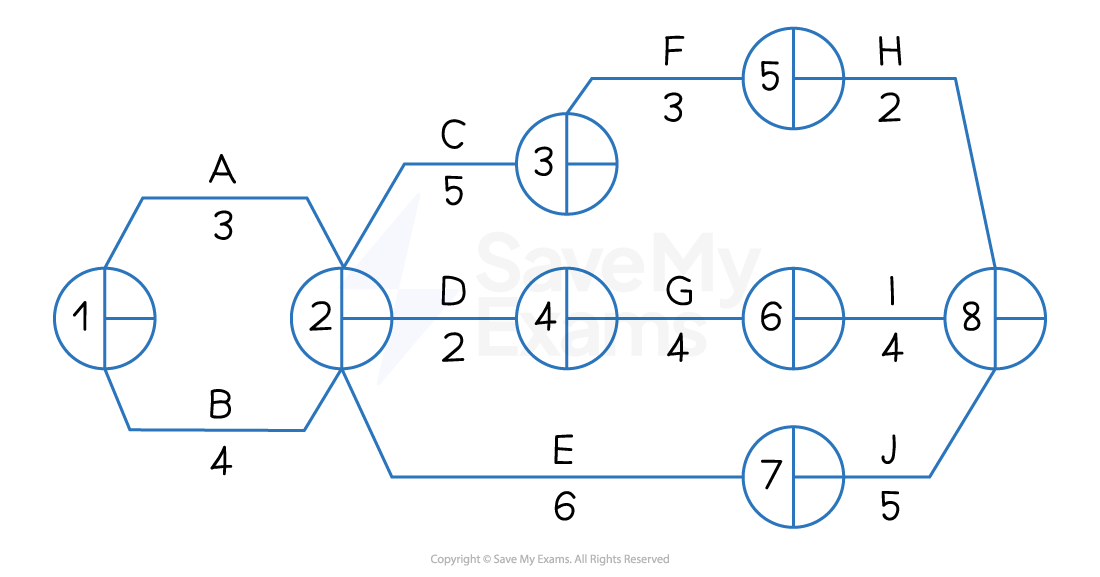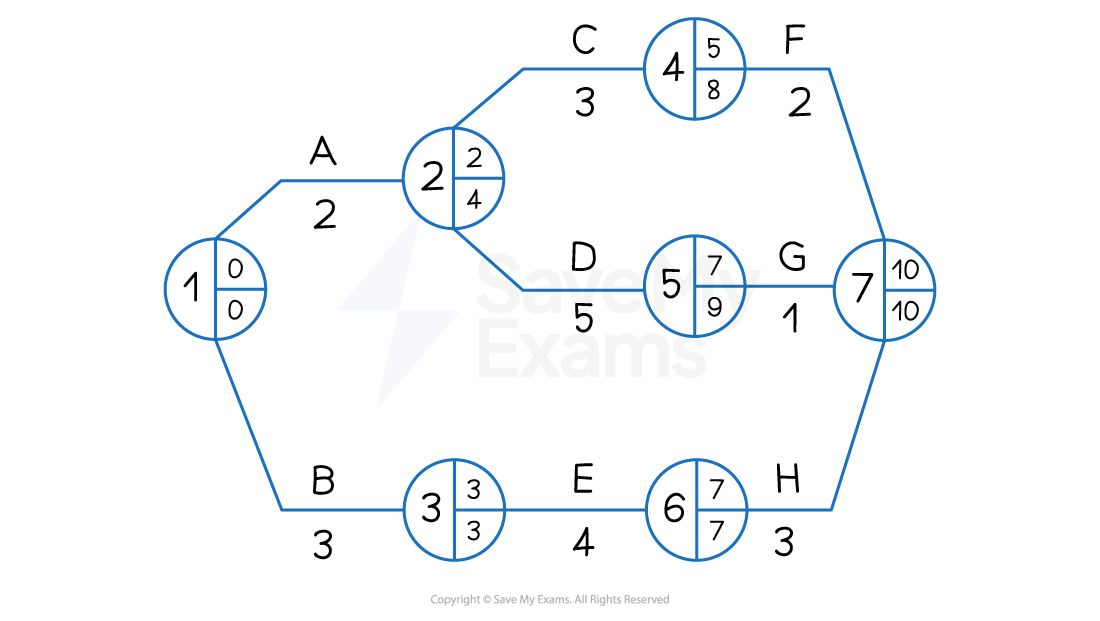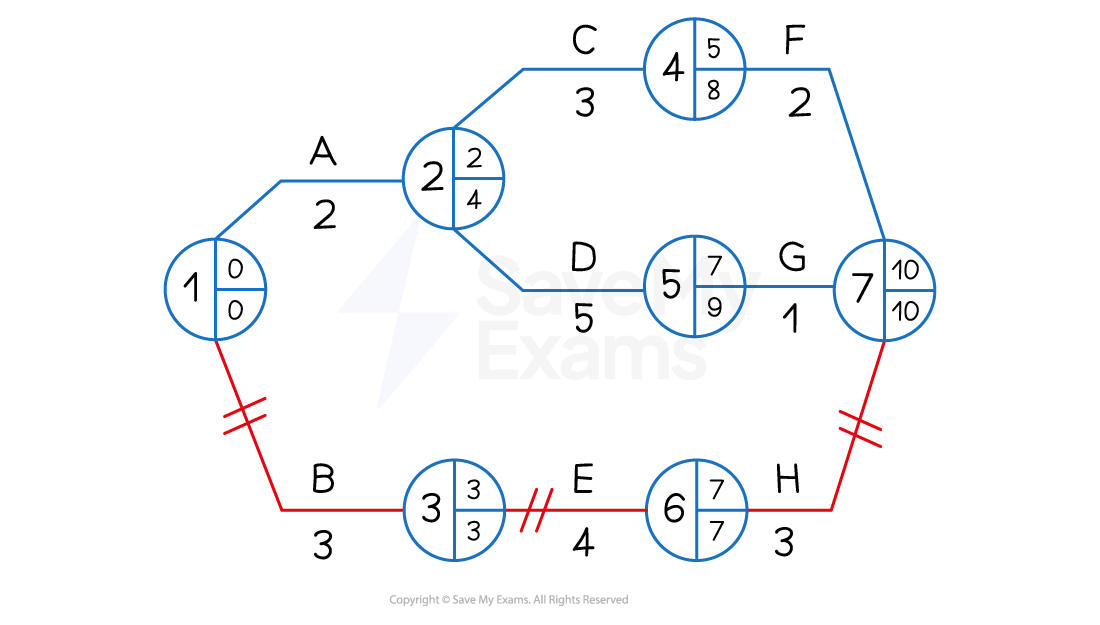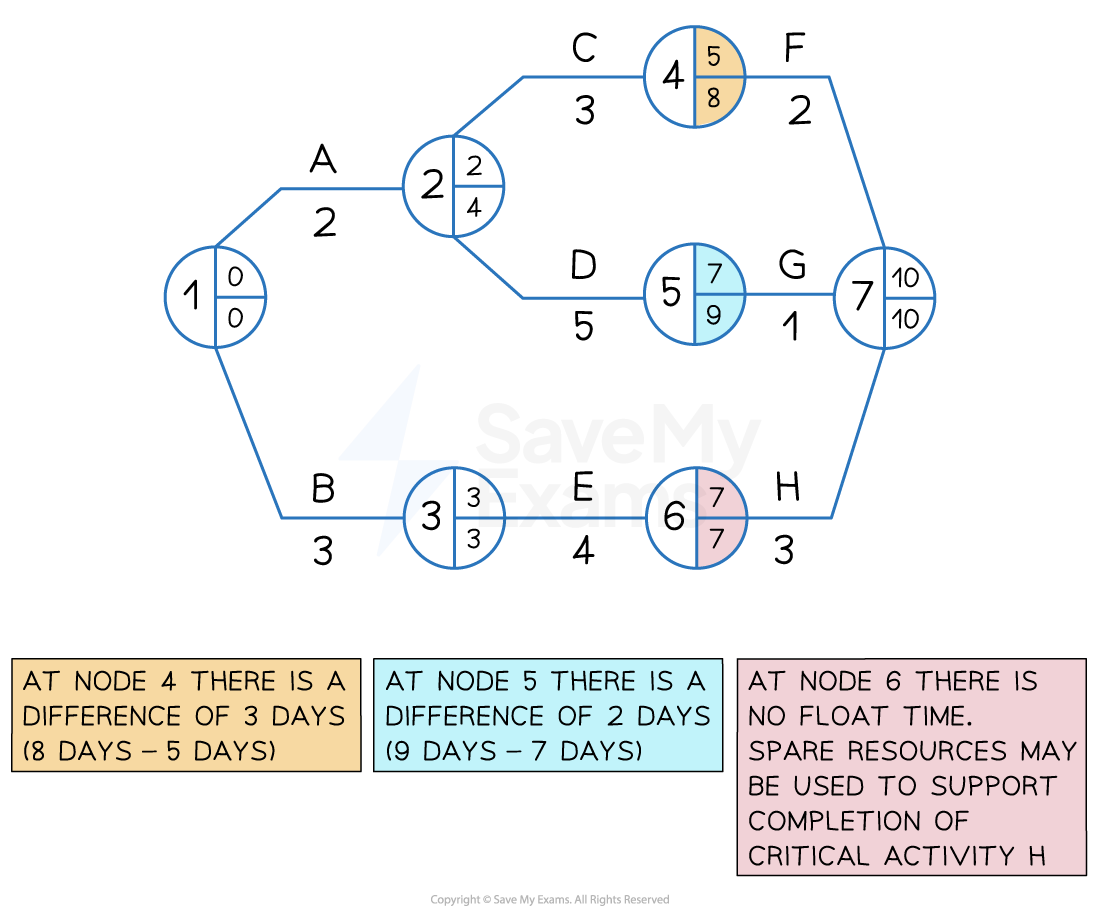The network diagram below shows the activities involved in a new promotional campaign for a small fashion accessories business as well as the time (in weeks) it is expected that each activity will take to complete.

Calculate
a) The earliest start times and latest finish times for each node. (4 marks)
b) The total float time for activity G. (3 marks)
Step 1 - Calculate the Earliest Start Times (EST)
Node 1 EST = 0
Node 2 EST = 0 + 3 = 3 but 0 + 4 = 4 so 4
Node 3 EST = 4 + 5 = 9
Node 4 EST = 4 + 2 = 6
Node 5 EST = 9 + 3 = 12
Node 6 EST = 6 + 4 = 10
Node 7 EST = 4 + 6 = 10
Node 8 EST = 12 + 2 = 14 but 10 + 4 = 14 and 10 + 5 = 15 so 15
Step 2 - Calculate the Latest Finish Times (LFT)
Node 8 = 15
Node 7 = 15 - 5 = 10
Node 6 = 15 - 4 = 11
Node 5 =15 - 2 = 13
Node 4 =11 - 4 = 7
Node 3 =13 - 3 = 10
Node 2 = 10 - 6 = 4
Node 1 = 4 - 4 = 0
Step 3 - Calculate the total float time for Activity G
Total float = LFT for the activity - Duration of the activity - EST for the activity
= 11 weeks - 4 weeks - 6 weeks
= 1 week








